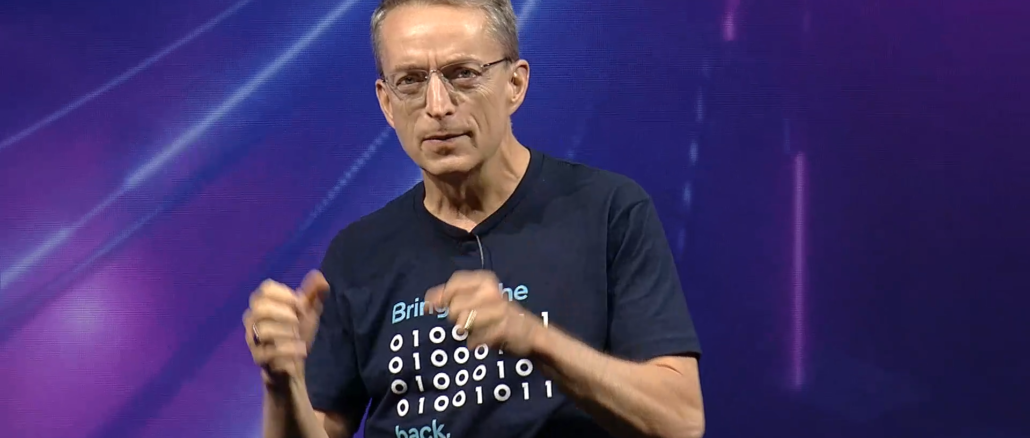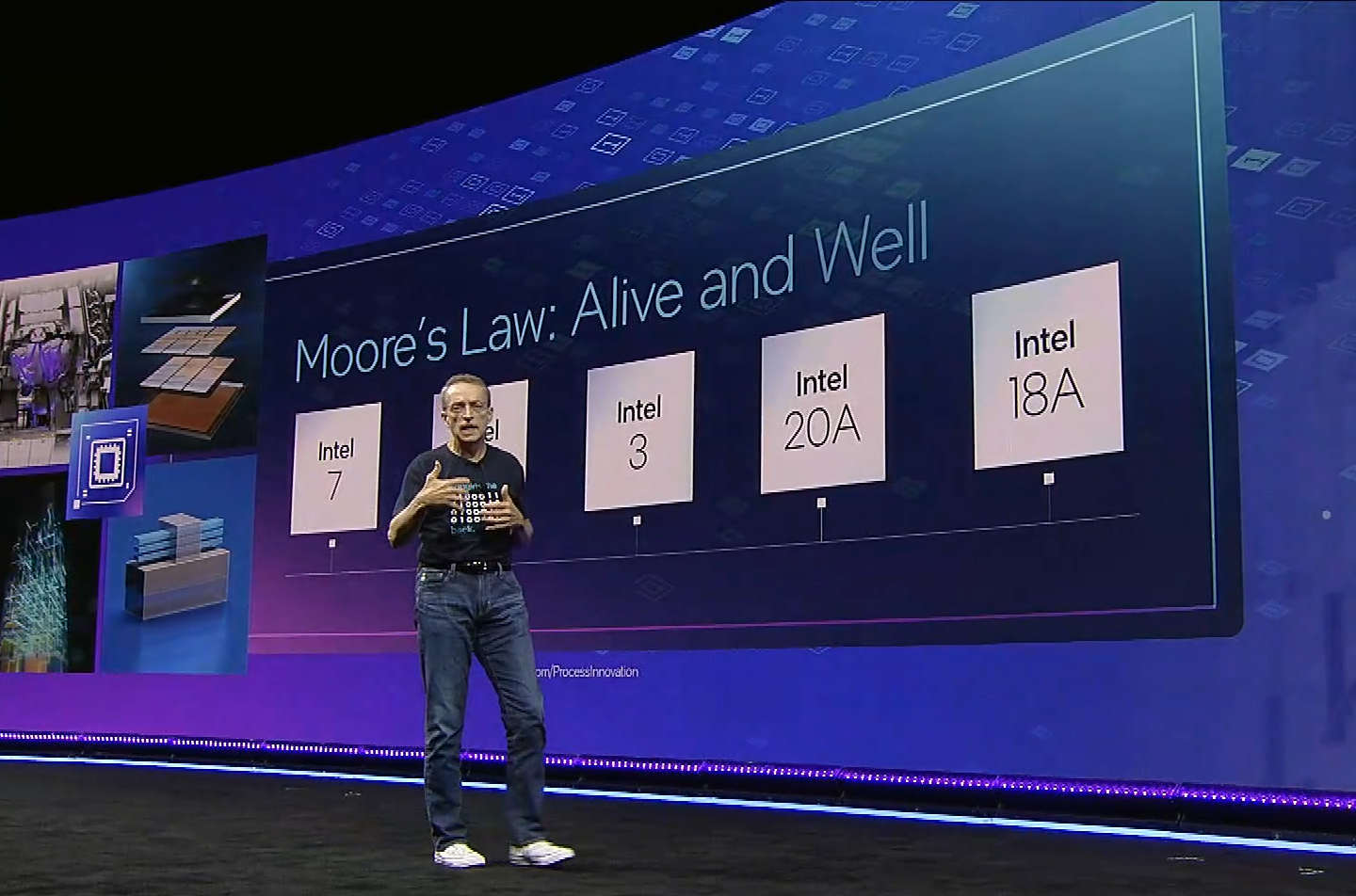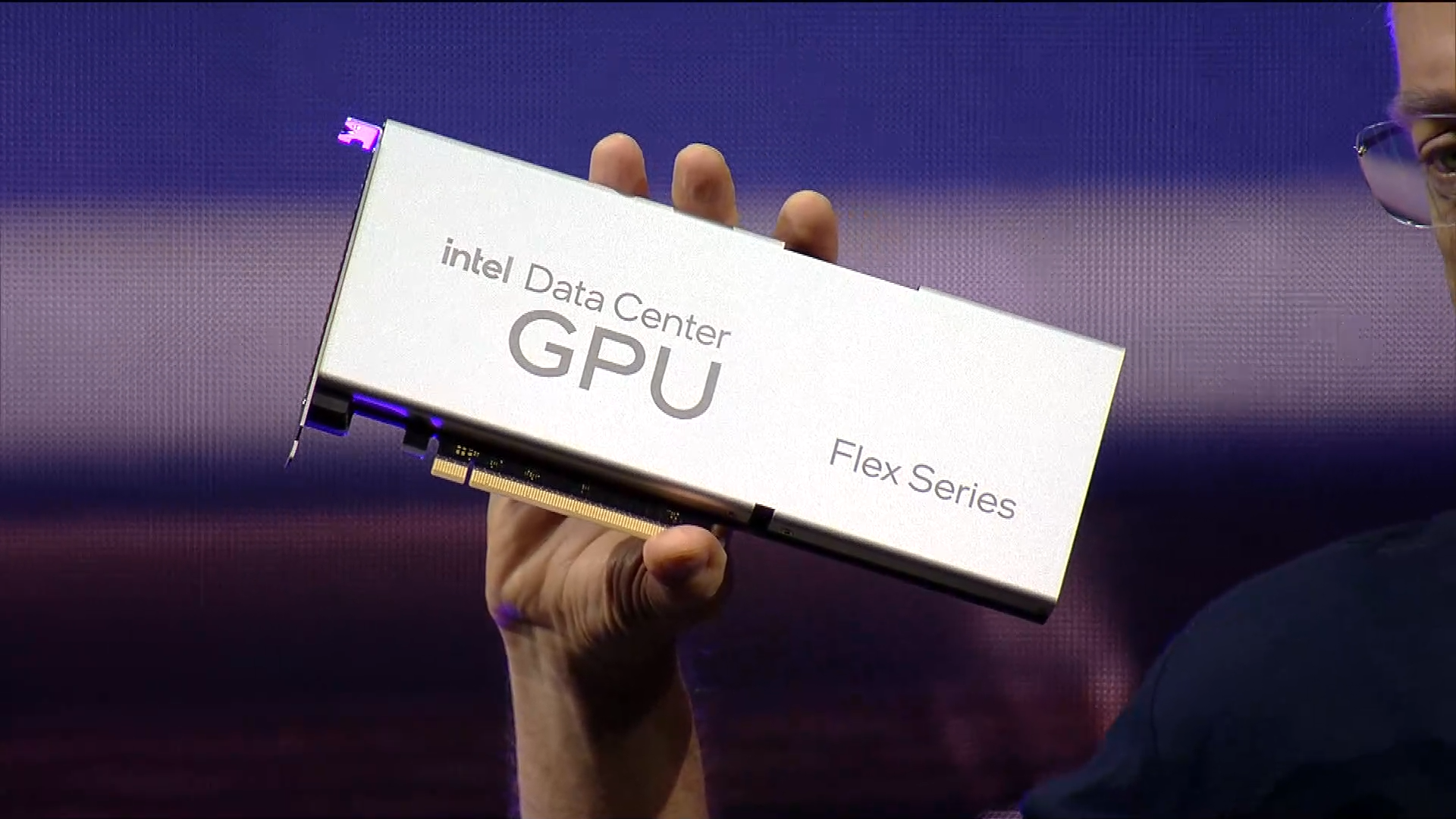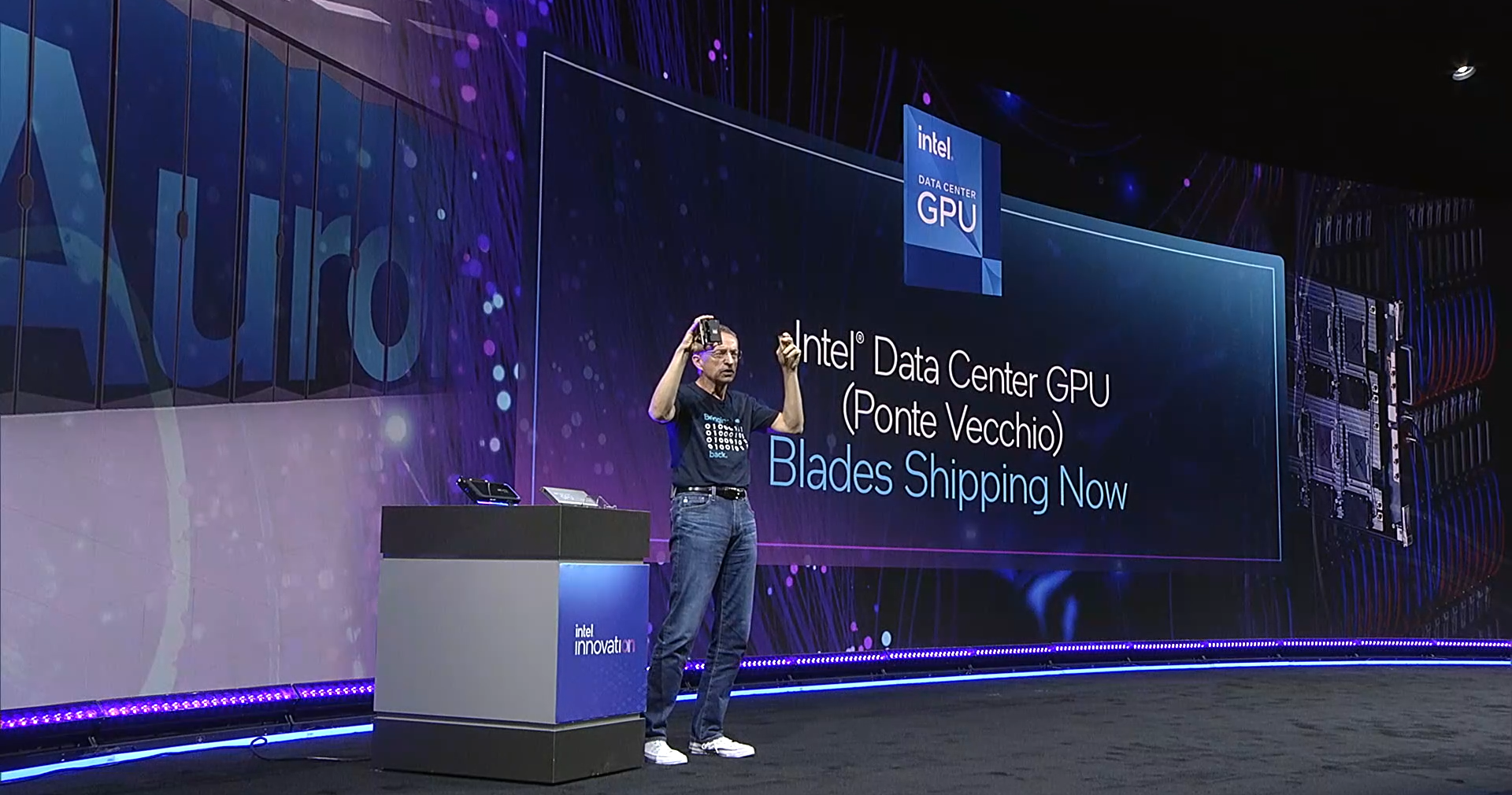
Intel chief executive officer Pat Gelsinger came into this week’s Intel Innovation 2022 conference less than two years into his plans to reshape the giant chip maker to fit into an IT world that is rapidly becoming more open, more cooperative, and more software-driven.
During this keynote and ensuing meeting with journalists and analysts after at the keynote, Gelsinger spoke about ongoing efforts to focus on the company’s core strengths in processor design and manufacturing, to push forward with new products (GPUs) and shed others (memory – bye, bye Optane, hello CXL), to build ecosystems in such areas as its nascent foundry business and new technologies like chiplets, and to give developers earlier access through its Intel Developer Cloud.
“I have to affirm Intel’s deep, unwavering commitment to an open ecosystem,” Gelsinger said as he started his keynote. “Last year, we said we’d innovate on future technologies in the open. We would offer you choice. We’d help drive industry-shaping standards. And as we said, we have to make them more secure. These platforms have to be things that you can trust in and build your platforms and businesses upon. And over the next two days, we’re going to show you our progress, but also look into the future in these areas as well.”
As we’ve talked about, Gelsinger left Intel after almost 30 years with the chip maker, coming back as CEO in early 2021 after 12 years away, including a time as CEO of VMware. He returned to a beleagured company with a broad portfolio of hardware and software offerings, haunted by product delays, and in a much more competitive space spanning the datacenter, cloud, and edge, with a reinvigorated AMD, a more muscular Arm, a rising Nvidia, and a growing cadre of companies offering specialized silicon.
Gelsinger within a few months rolled out his multi-billion-dollar IDM 2.0 strategy, doubling down on manufacturing – there are new fabs being built in Arizona, Ohio, and elsewhere – committing to an Intel that is both more aggressive and more cooperative with competitors, and creating a chip foundry business.
All that said, its hasn’t been easy for Intel, which has taken hits in its quarterly numbers and is still dogged by delays, such as with its highly anticipated “Sapphire Rapids” next-generation Xeon SP server CPUs.
But it was an optimistic-as-usual Gelsinger that took the stage in San Jose, California, stressing that Intel, with a range of new technologies that have come out in recent years such as advanced packaging and improved power delivery, will continue to be the “stewards of Moore’s Law into the future.” This comes as rivals like Nvidia and Arm for years have been saying Moore’s Law is over.
“We aspire from today about a 100 billion transistors on a single package to by the end of the decade, a trillion transistors in a single package,” he said. “We’re ahead of schedule on this audacious strategy that we have set, five nodes in four years. Normally it takes two years for a node.”
The Intel Foundry Service and the ongoing development of chiplets – in concert with other silicon vendors, such as Taiwan Semiconductor Manufacturing Co, AMD, and Samsung electronics in the Universal Chiplet Interconnect Express (UCIe) – are key parts of this innovation drive.
“We’re going to need an ecosystem to create the standardization of a chiplet architecture,” Gelsinger said, adding that there are more than 80 companies participating. “You can imagine something like this: I’m getting a few of my chiplets from Intel, but I have a few of these pieces that I also developed with TSMC and maybe my power delivery components are coming from TI and I have some of my I/O chips that I’m doing on GlobalFoundries. I can bring those together and Intel, with the most advanced packaging technology, can assemble those together for me and be my supply chain manager. We’re going to bring all of those pieces together, enabling what we say is the next generation of the chip ecosystem.”
However, while extolling the virtutes of collaboration, Gelsinger also promised the Intel would compete fiercely in the space. He pointed to the GPUs that the company is rolling out, from its Flex Series for the datacenter – which will support not only Intel’s OneAPI programming model but also others, like TensorFlow and PyTorch – and “Ponte Vecchio” Xe HPC GPUs for HPC environments.
Intel already is delivering blades with Ponte Vecchio Xe HPC and Sapphire Rapids Xeon SP CPUs to the Argonne National Laboratory for the “Aurora” exascale supercomputer.
The company is completing the GPU trifecta with the Arc A770 for gaming systems, which will be available October 12.
“The market wants them,” the CEO told journalists after the keynote. “At the end of the day, they want choices. They want us in this segment of the industry and we’re excited to be there. The GPU is a critical piece of what we’re doing in the datacenter.”
Gelsinger also announced new capabilities within the vendor’s Developer Cloud, which is designed to give programmers early access to upcoming Intel technologies for as long as a year. In a limited beta trial, some organizations and developers will be able to test not only the plain vanilla Sapphire Rapids Xeon SPs, but also the Sapphire Rapids chips with HBM memory stacks, the Habana Gaudi Deep Learning accelerators, and Ponte Vecchio Xe HPC and Flex Series GPUs.
Developers also will get new tools to drive computer vision in AI space. Intel introduced Geti – a platform using both Intel hardware and software and codenamed “Sonoma Creek” – to help programmers, data scientists and others to more easily create AI models via a single interface for everything from data loading to model training. It’s part of Intel’s larger push to lower the barrier to AI and machine learning adoption.
It will be complemented by Intel’s OpenVINO AI toolkit.
“What you’re seeing here is this new computer vision platform lets anyone and the enterprise teams build a computer vision models rapidly,” Gelsinger said, adding that Geti will be available in the fourth quarter. “We can do it with small training workflows, enabling enterprises to digitally transform and mainstream AI easily into their operations.”
He said Intel will continue to push the innovation efforts even as the global economy struggles with inflation and threatens a recession. He noted that with few exceptions, economic downturns don’t last much longer than a few quarters and while Intel, like other companies, has to be cautious in its spending, it still needs to invest.
“It takes us multiple years to develop a new processor architecture,” Gelsinger said. “It takes multiple years to develop the core process technologies. You cannot be driven, if you’re going to be in this industry, by near-term financials. Yes, we need to be austere. Yes, we need to manage our cash carefully. But we are investing for the long term. That is our strategy for building the process technologies for unquestioned leadership. We’re building the capacity to ramp those technologies. We’re making the long-term investments in our roadmaps across our networking business, our graphics business, our client business, our automotive business, and our datacenter business. We are going to do all of those and we’re going to manage the near-term cost.”








It took a while to decode the binary encoded AsCII, but I found his shirt, in case anyone else is interested 🙂
https://senprints.com/en-gb/bringing-the-geek-back-pat-gelsinger-tees
The “bye, bye Optane, hello CXL” begs the question of what form the DAOS will take in Aurora (hopefully a composable subsystem)?